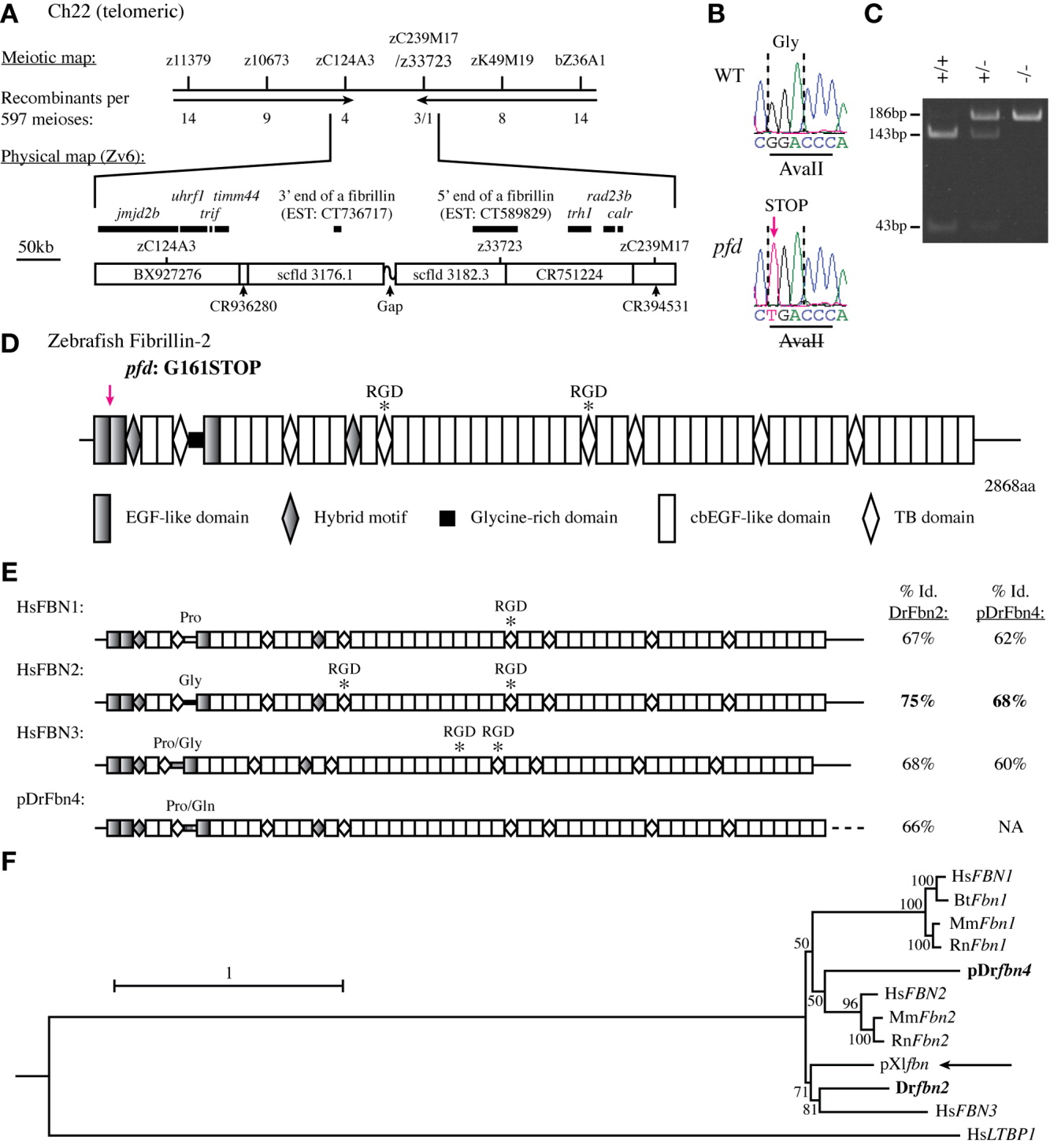Fig. 6 The pfdgw1 mutation disrupts the zebrafish fbn2 gene. A: The pfdgw1 lesion was meiotically mapped to a telomeric region bounded by markers zC124A3 and z33723 on chromosome 22. The number of recombinants is noted for each marker; a single recombinant was identified at z33723. Marker, gene, and fibrillin expressed sequence tag (EST) locations relative to bacterial artificial chromosomes (BACs) and scaffolds (scfld) are illustrated on the physical map, which is based on Zv6. B: Sequencing traces from the fibrillin on chromosome 22 revealed a nonsense mutation (arrow) in pfdgw1 mutants that abrogates an AvaII restriction enzyme site. C: Genotyping of pfdgw1 fish by restriction digest of a polymerase chain reaction (PCR) product encompassing the mutated sequence. PCR product from the wild-type allele (+) is cleaved to generate fragments of 143 bp and 43 bp; product from the mutant allele (-) is not cleaved. D: Structure of zebrafish fibrillin-2 illustrating the conserved modular domains of this 2868 amino acid protein. The glycine-rich domain and location of the RGD motifs (asterisks) are characteristic of fibrillin-2 but not fibrillin-1 or fibrillin-3 orthologues. The pfdgw1 mutation is predicted to result in a truncated protein product (arrow). E: Structure of the three human fibrillins and zebrafish fibrillin-4. The percent amino acid identity with zebrafish fibrillin-2 and fibrillin-4 is indicated. The dashed line indicates sequence that is presumed to exist but has not been determined. F: Phylogenetic tree of fibrillin DNA coding sequences from various vertebrate species. Latent transforming growth factor-beta binding protein 1 (LTBP1) is used as the outgroup. Species are identified using standard two-letter abbreviations with zebrafish genes in bold. The arrow indicates Xenopus laevis fibrillin, a predicted fibrillin-2 orthologue. The scale bar reflects expected substitutions per site, and partial sequences begin with “p.”
Image
Figure Caption
Figure Data
Acknowledgments
This image is the copyrighted work of the attributed author or publisher, and
ZFIN has permission only to display this image to its users.
Additional permissions should be obtained from the applicable author or publisher of the image.
Full text @ Dev. Dyn.

